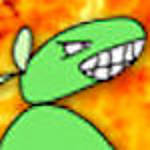Quoted Text
Greg,
I believe that the photographs you posted actually reinforce Herbert's modified statement when he refers to the size and number of paint "chips".
None of the photographs illustrate "chipping" of paint to the extent of the Jagdpanther model earlier in the thread. Even the photo of the Tiger I turret illustrates paint that has blistered and peeled due to fire, not from "chipping".
They largely illustrate dirty and stained vehicles with paint that appears to be worn in some areas. Some of the smaller spots could be "chipped" paint but the "chips" would be relatively minute on a 1/35 scale model.
I agree that bare metal is exposed on the front bumper of the Puma, apparently from scratching the paint after coming into contact with a hard surface. I also agree that bare metal is exposed on the rotating cupola of the Puma. This appears to be the result of wear from rubbing rather than "chipping".
Clearly "chipping" of paint occurs to some extent as illustrated in the factory photo of the towing shackle earlier in the thread. Small "chipped" and scratched areas are visible but once again, they would be minute on a model.
Clearly paint will "chip" if it is struck by a tool or some other hard object. The size of the "chip" will be determined by the size of the object that struck the paint. Once again, I feel that paint "chips" in general would be relatively small on a model.
Scratching of paint is a different scenario and could account for large areas of paint damage (i.e. driving against a stone wall).
"Chipping" has become a catch-all phrase for all types of paint damage (chipping, scratching, & wear/rubbing) when they should probably be described separately.

Maus,
Thanks for the comments - I wish someone on this thread would tell me what it is we are directly talking about - paint whether it comes of as a "chip" or a "worn area" is still paint that has been removed.
CHIPPING (to my mind) will occur - anytime that any vehicle gets,
- unloaded with cranes and/or chains from a ship or a train (these vehicles DID NOT DRIVE all the way to their TAO's), or
- when it is driven onto or loaded or unloaded on a train flatbed and all the unbolted gear gets thrown up on the hull for transport with the rest of the chassis,
- when it crashes through the corner of a brickwall, or
- through a hedgerow,
- when it get hits by small arms fire or
- a close by grenade detonation,
- in the case of german armor, if it gets hit by a glancing blow from an allied vehicle/shoulder fired AT round - not capable of penetrating the armor thickness
-when a vehicle gets destroyed by direct fire from a penetrating anti tank round
-when stand off armor prematurely detonates an incoming AT round
-when an allied tank who has run out of AT ammo fires a HE round in an attempt to secure it's egress, hits the outside armor of a vehicle
As I have said before in this thread - most of the wear on these vehicles is not going to be readily visible from the types of photos of WW2 that have widely been published over the last 6 decades - BUT there are plenty out there that show paint removed from these vehicles, I wasn't actually present at the site of each and every photo, and so can't AND WON'T state categorically if the paint was worn or chipped - BUT IT WAS REMOVED
But others here have made eloquent and perfectly sensible statements - how close do you have to get to a motor car to see a scratch? Doesn't the existence of scratches on modern day motor cars, not in day to day armoured combat, but simply driving around and crashing into each other - prove by extension that AFV's also got scratched and CHIPPED down to bare metal in one of the world's most destructive global conflicts in history.
(If a tree falls in the forest, and no one is present - does it make a noise).
Wake up to yourselves.
Greg












































